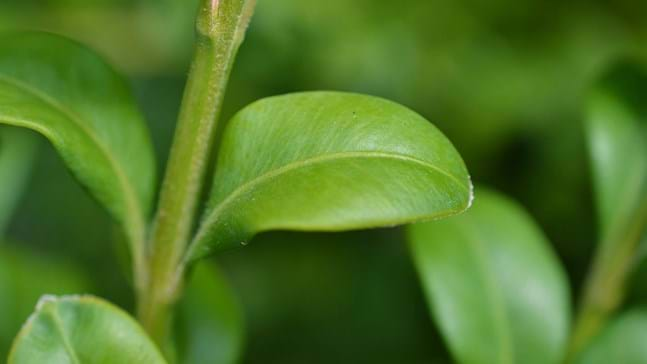
Credit: Alex Caswell / WTML
Leaves
Oval and 10–25mm long, shiny, leathery and dark green, and formed on short stalks.
A native evergreen that’s at home in your garden. Box is so special it’s got a hill named after it. Box Hill in Surrey takes its name from the ancient box woodland on its steep chalk slopes.
Common names: common box, box, European box
Scientific name: Buxus sempervirens
Family: Buxaceae
Origin: native
Common box is a slow-growing, evergreen tree. Mature trees can grow to a height of 12m. They have a compact habit, with smooth grey bark which fissures with age, and green, downy stems.
Look out for: dark green oval leaves which are thick and waxy.
Identified in winter by: the thick, evergreen leaves which smell sweet.

Credit: Alex Caswell / WTML
Oval and 10–25mm long, shiny, leathery and dark green, and formed on short stalks.
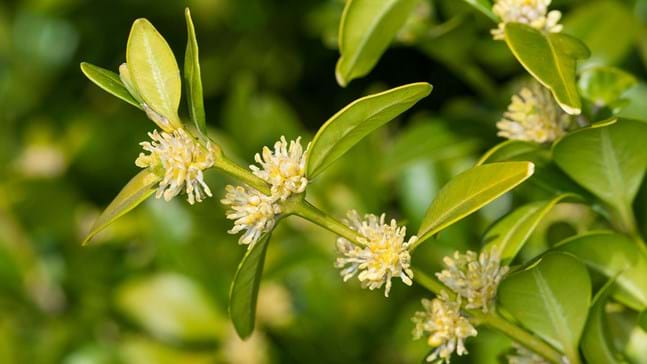
Credit: Frank Hecker / Alamy Stock Photo
Common box is monoecious, so both male and female flowers are found on the same tree in April and May. Clusters of green-yellow flowers grow in the leaf axils, each one comprising several male flowers and a terminal female flower.
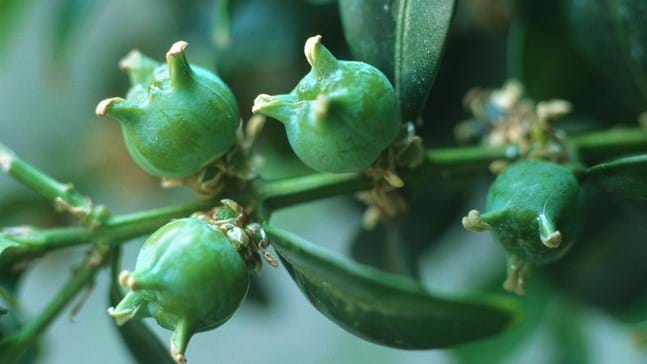
Credit: Blickwinkel / Alamy Stock Photo
Once pollinated by wind, each female flower develops into a green, dry capsule and ripens to a brown, woody seed case.
The many cultivated varieties often found in gardens, clipped into topiary creations.
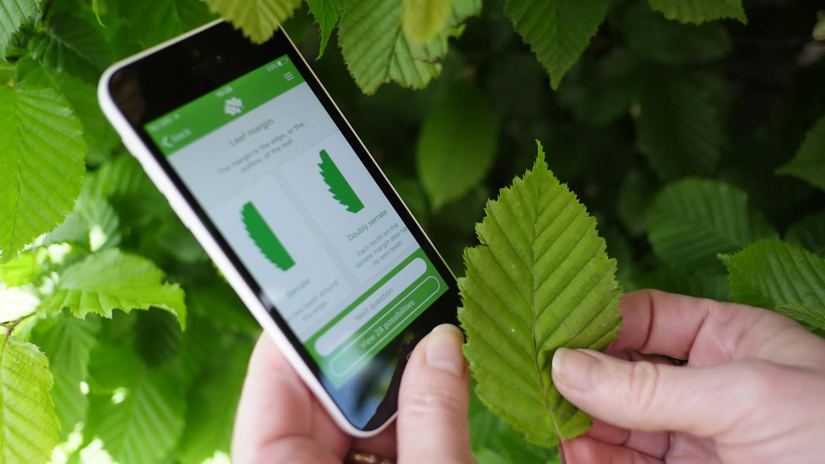
Download our free Tree ID app for Android and iPhone to identify the UK's native and non-native trees. It's an A-Z tree guide in your pocket.
Download the appBox can live for several hundred years.
It is native from southern England to northern Morocco, and the Mediterranean region to Turkey. It thrives on hillsides, in woodland or scrub.
In the UK, the best known wild populations of box are found on Box Hill in Surrey, the North Downs, the Chilterns and the Cotswolds, where it can grow in large numbers.
You'll also see it planted in parks and gardens where it is a popular hedge plant.
Box is popular with bees and provides a dense, sheltered habitat for small birds, mammals and insects.
Box was seen as a sombre plant and in some areas sprigs of box were given to mourners at funerals to throw onto the coffin.
Box wood is the heaviest of the native timbers and will not float in water.
Common box timber is yellow, finely textured and hard. It is used for wood engraving and to make violin pegs and musical instruments. The shrub is commonly used as a topiary and hedging plant in gardens.
Box contains steroidal alkaloids and flavonoids and has been used medicinally for a variety of ailments within its range over the centuries. These include gout, urinary tract infections, intestinal worms, chronic skin problems, syphilis, haemorrhoids, epilepsy, headaches and piles, leprosy, rheumatism, HIV, fever and malaria. In homoeopathy, the leaves are used to treat rheumatism, HIV and fever.
All parts of the tree are toxic and may irritate the skin or cause a stomach upset if ingested.
Prior to 2011, the main threat to box was box blight – a fungal disease that causes bare patches and dieback, especially on plants used for hedging and topiary. It can also be affected by box sucker – a sap-sucking louse that causes stunted spring growth.
However, in 2011 a new pest was detected in Britain’s gardens – box-tree caterpillars. They feed on the leaves within the webbing they make over the foliage and can completely defoliate box plants in days. Already established in the London area and surrounding counties, they are quickly spreading and are likely to be a major pest problem in the future. However, they only eat box leaves so shouldn’t be confused with other caterpillars.
For more information on box sucker and box-tree caterpillars, as well as identification tips, visit the Royal Horticultural Society.

Shop
We have single trees and tree packs to meet your needs, from wildlife to woodfuel. Delivery is free.
External link
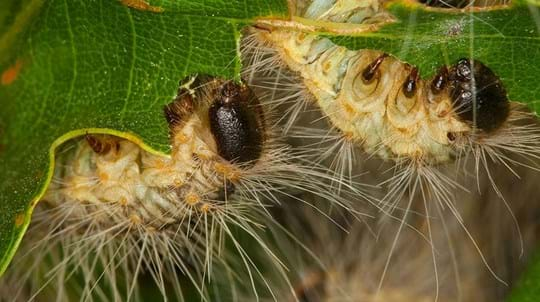
Trees woods and wildlife
Learn more about the pests and diseases threatening our trees. Find out how to spot them, the symptoms and outlook, and how you can help.